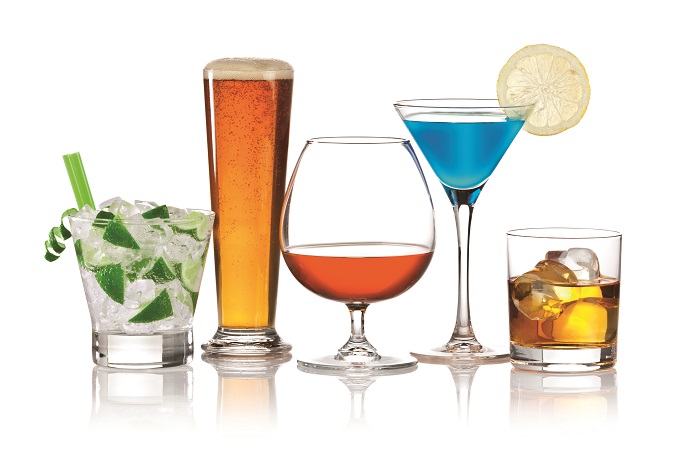Alcohol consumption a growing health concern
Posted on March 30, 2021 in General oral health
 An increase in alcohol consumption to manage stress is also increasing people’s risk of oral health problems associated with alcohol.
An increase in alcohol consumption to manage stress is also increasing people’s risk of oral health problems associated with alcohol.
Several national studies show an increase in alcohol consumption over the past year. In one study, 60% of adults reported an increase in drinking during the COVID-19 pandemic, and 46% cited stress as the reason.1
Alcohol consumption, when not done in moderation, can lead to a number of oral health problems, like increasing risk of gum disease, tooth decay, mouth sores and even oral cancer.
Connection between alcohol and oral cancer
April is both Alcohol Awareness Month and Oral Cancer Awareness Month. The two have a distinct connection.
Alcohol abuse is the second-highest risk factor for developing oral cancer, according to the Oral Cancer Foundation. About 75 to 80% of Illinoisans with oral cancer drink alcohol.2
When heavy drinking is combined with smoking, a person has 30 times greater risk of developing oral cancer.3 The Centers for Disease Control and Prevention defines heavy drinking as eight or more drinks a week for women, and 15 or more for men.
Reducing the risk
An estimated 2,100 Illinoisans will be diagnosed with new cases of mouth and throat cancer this year according to the American Cancer Society.
Men are especially susceptible. Oral cancer remains one of the top 10 types of cancer among men.4 The likelihood of oral cancer also increases with age – it is most often diagnosed among people over 55.5 Aside from alcohol and tobacco, other risk factors associated with oral cancer include sun exposure and human papillomavirus (HPV) infections.
Prevention is the best medicine. Reduce your risk of oral cancer by:
- Visiting the dentist regularly. Dentists can detect signs of more than 120 diseases that have symptoms appearing in the mouth, including oral cancer.
- Limiting alcohol consumption.
- Abstaining from smoking marijuana and all forms of tobacco including chewing, vaping and smoking cigarettes.
- Getting an HPV vaccine.
- Applying lip balm with at least SPF 30.
Self-exams can also help. Symptoms to look for include a sore or lump in the mouth, lip or throat; a red or white patch in the mouth; or a feeling that something is caught in your throat. You may also experience difficulty chewing, swallowing or moving the jaw or tongue; numbness in the mouth; swelling of the jaw or ear pain.
Healthier ways to manage stress
Having a drink, while enjoyable on occasion, isn’t the best way to alleviate stress. Healthier choices include:
- Exercising of any kind, whether it’s a low-impact outdoor walk or a high-impact sports activity or fitness class.
- Eating healthy, well-balanced meals that include lean protein, dairy and fresh fruits and vegetables.
- Getting enough sleep so your body can recharge.
- Staying connected with friends and family, even if it’s through video chats or phone calls.
For additional tips on protecting your oral health, visit deltadentalil.com/oral-health.
1 International Journal of Environmental Research and Public Health, https://www.ncbi.nlm.nih.gov/pmc/articles/PMC7763183/
2 Illinois Department of Public Health, http://dph.illinois.gov/topics-services/diseases-and-conditions/diseases-a-z-list/oral-cancer
3 American Cancer Society, 2021 Cancer Facts & Figures, page 20, https://www.cancer.org/content/dam/cancer-org/research/cancer-facts-and-statistics/annual-cancer-facts-and-figures/2021/cancer-facts-and-figures-2021.pdf
4 American Cancer Society, 2021 Cancer Facts & Figures, page 10, https://www.cancer.org/content/dam/cancer-org/research/cancer-facts-and-statistics/annual-cancer-facts-and-figures/2021/cancer-facts-and-figures-2021.pdf
5 NIH, National Institute of Dental and Craniofacial Research, https://www.nidcr.nih.gov/sites/default/files/2018-10/older-adults-oral-health.pdf